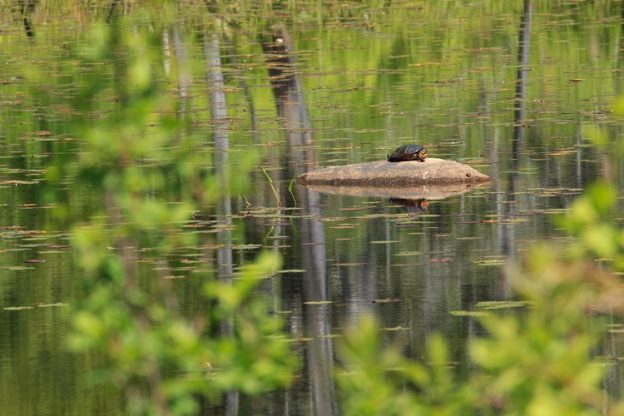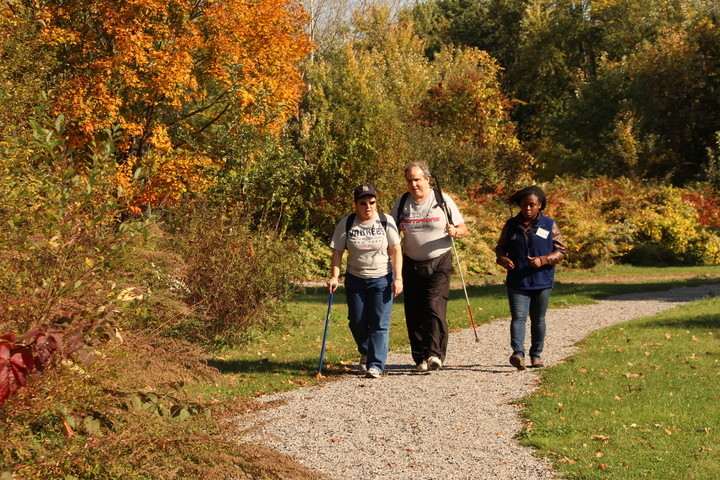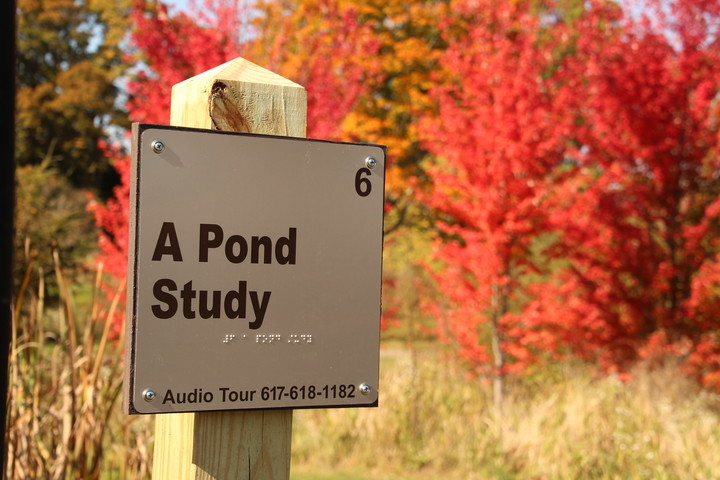You never know what you’ll find when exploring Boston’s Metro West. Mass Audubon Metro West Wildlife Sanctuaries—Drumlin Farm in Lincoln, Habitat in Belmont, Broadmoor in Natick, and Waseeka in Hopkinton—host miles of trails meandering through wetlands, fields, animal exhibits, and a few surprises. Don’t miss these hidden gems on your next visit.
1. For When You Want to Go on an Adventure
This hidden gem isn’t off the main parking lot at Habitat Education Center & Wildlife Sanctuary in Belmont. You’ll need to follow Lees Way trailhead off of Somerset Street in Belmont to the Weeks Trail area. Along Lees Way, look for what’s known to staff as “The Tree of Resilience”—a tree whose main trunk is dead and hollowed out, but still has two branches very much alive growing outside of it.
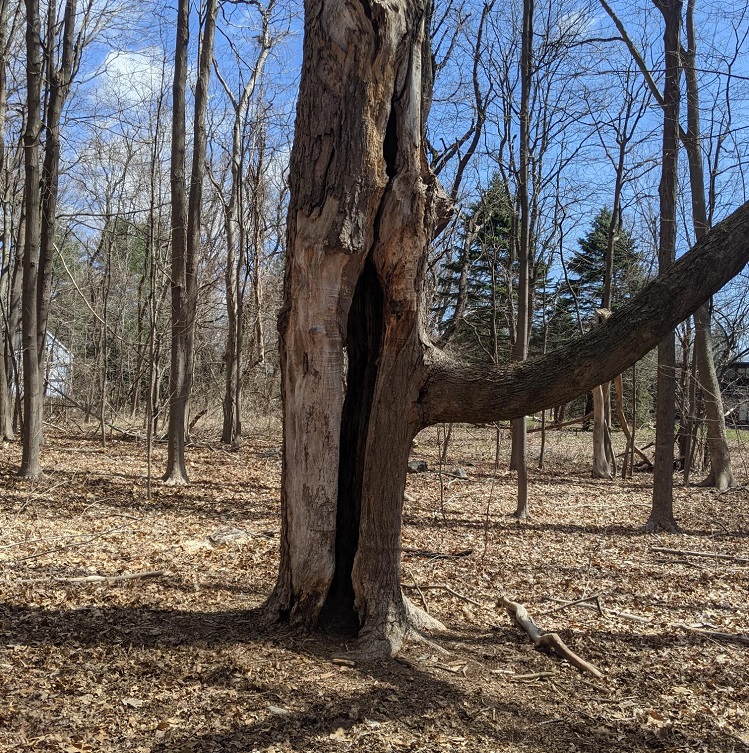
Continuing down the trail, you’ll come across Weeks Pond, where you may find a mother duckling leading her young, bullfrogs peeking through the tiny floating leaves, or damselflies skimming the surface. In the meadow, you may even catch our small herd of goats grazing.
2. For When You Need to Relax
With more than 600 acres, Broadmoor Wildlife Sanctuary in Natick is filled with spots that, when you find them, make the rest of the world melt away.
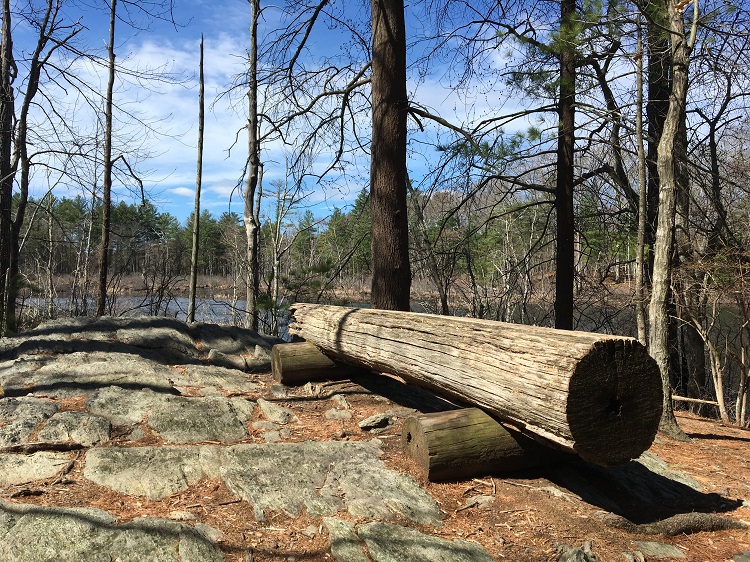

Relax on the log bench perched on top of a rock outcropping overlooking the Indian Brook Marsh. When entering through the parking lot, cross the boardwalks, and turn right at signpost #3, instead of hopping onto one of the main loop trails.
This spur trail, made specifically for this scenic outlook, offers a wonderful view of Indian Brook Marsh. Look and listen for Belted Kingfishers, Wood Ducks, Red-tailed Hawks, Great Blue Herons, and more. The longer you linger, the more you’re likely to see.
3. For When You’re Feeling Mysterious
While not on Drumlin Farm’s property, and definitely not natural, if you travel to the outskirts of the crops fields where we grow our food, you can find yourself next to one of Lincoln’s most mysterious and unexplainable pieces of local lore. Ponyhenge—as it’s known to the locals—is a collection of broken-down rocking horses, plastic ponies, and other horse figurines that have spontaneously started holding court along Old Sudbury Road, since sometime in 2010.
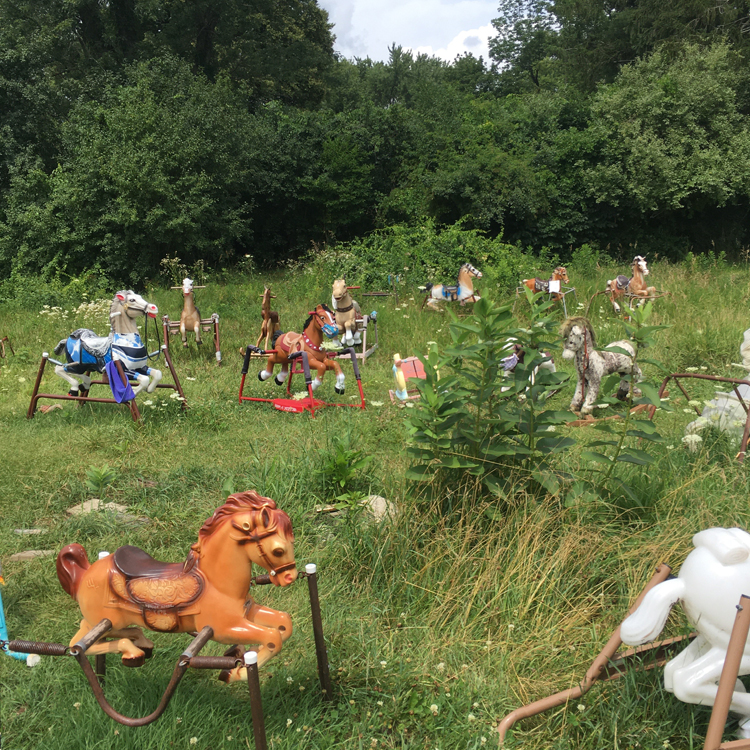
The collection has grown steadily since then, and stranger still, their configurations are known to change periodically, as if by magic. You may visit and see them in a circle, lined up like racehorses, or strewn about haphazardly. To see for yourself, take the Boyce Field Loop trail down to Old Sudbury Road. Along the way, you’ll see where Drumlin Farm’s CSA and farmstand vegetables are grown.
*Please note Ponyhenge is on private property but can be viewed from the fence on Drumlin Farm’s edge. Please stay on the trails and do not walk through growing fields during your adventure.

4. For When You Need a Turtle Fix
There is a place in the Metro West where turtles can go to just get away from it all. Understandably, sometimes you just want soak up the sun, and our turtle rafts at Habitat do just that. Take the Pond Loop Trail around the aptly named Turtle Pond for a glimpse at these sunbathing reptiles.
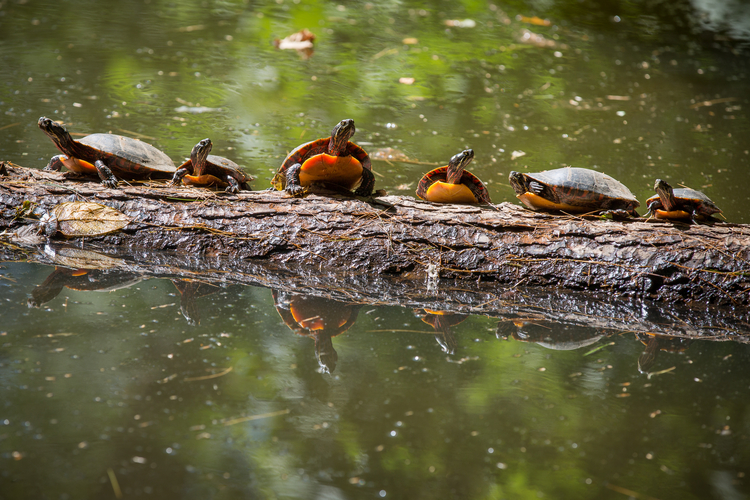
In reality, they’re doing more than just lounging about—sun-basking serves many purposes, including helping to promote muscle activity and digestion, encouraging leeches and other parasites to drop off, and triggering the production of vitamin D, which is essential for strong shells. A pair of snapping turtles were recently at the pond, a new sighting among all the more usual painted turtles that enjoy their favorite basking spot.
5. For When You Want to Take the Trail Less Traveled By
Have you been to Waseeka Wildlife Sanctuary in Hopkinton before? This little-known sanctuary offers all the benefits that come with being off the beaten path: limited trail traffic, spectacular views, and the ability to take your time and make your own adventure. The sanctuary features a hidden pond with standing dead trees and snags that provide nesting sites for Eastern Bluebirds, Pileated Woodpeckers, Great Blue Herons, Ospreys, and the occasional Great Horned Owl.
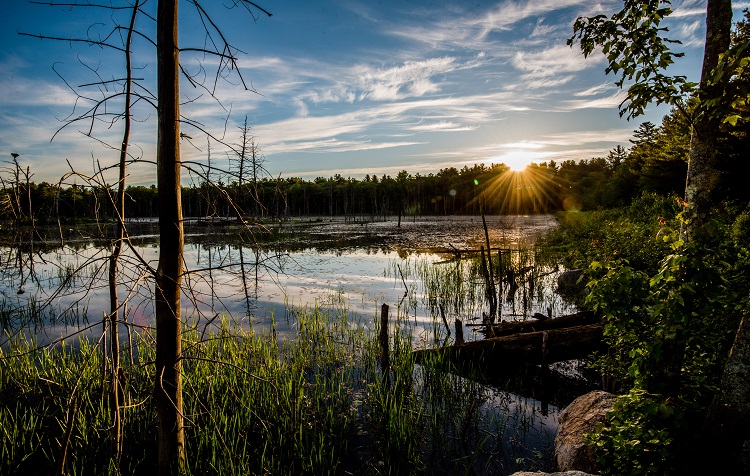
Unlike the other Metro West wildlife sanctuaries, this site can be easy to miss. Look for the small parking lot along Clinton Street in Hopkinton, on the right about 2 miles up from turning onto it via Route 135.
What’s your favorite hidden gem at one of our Metro West wildlife sanctuaries? Share in the comments.


